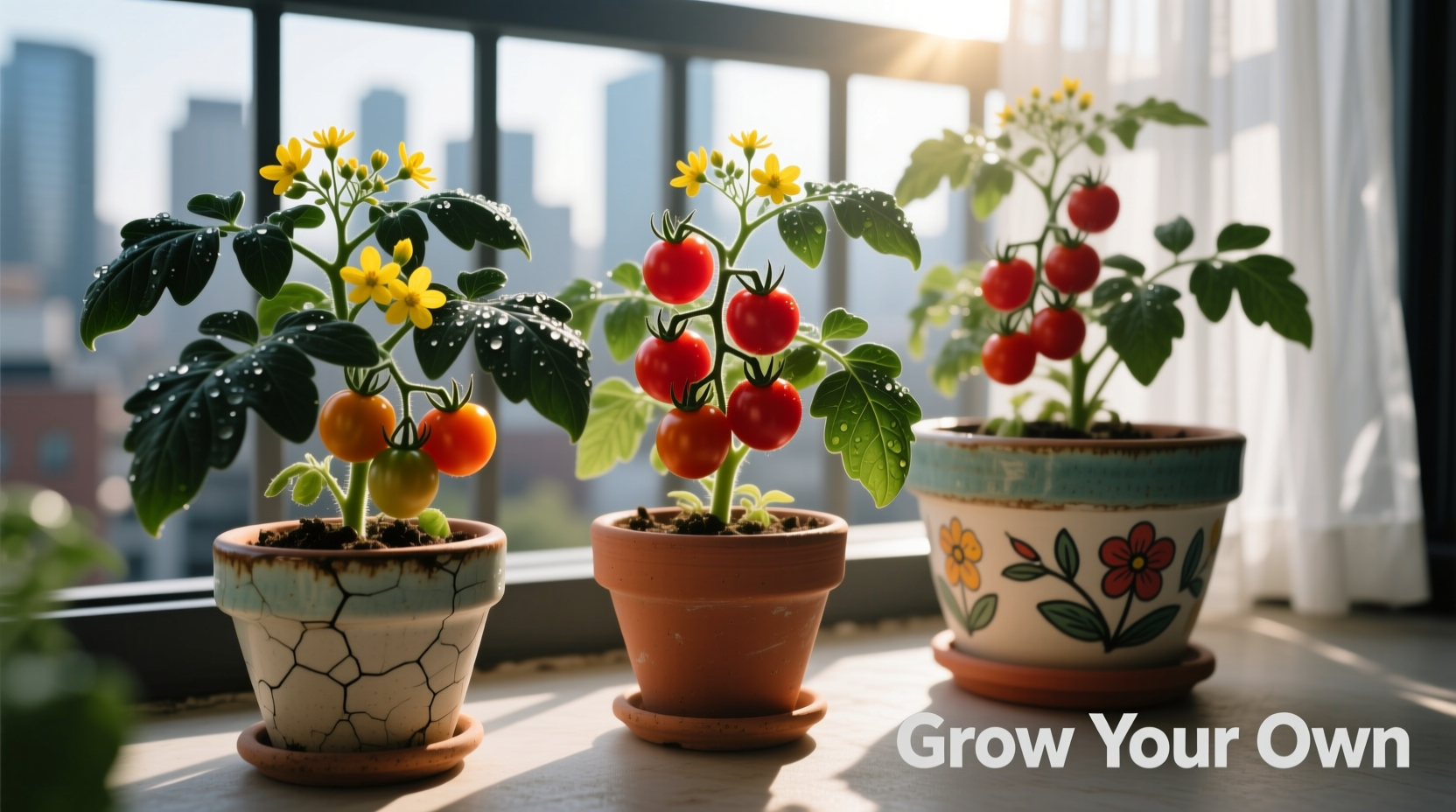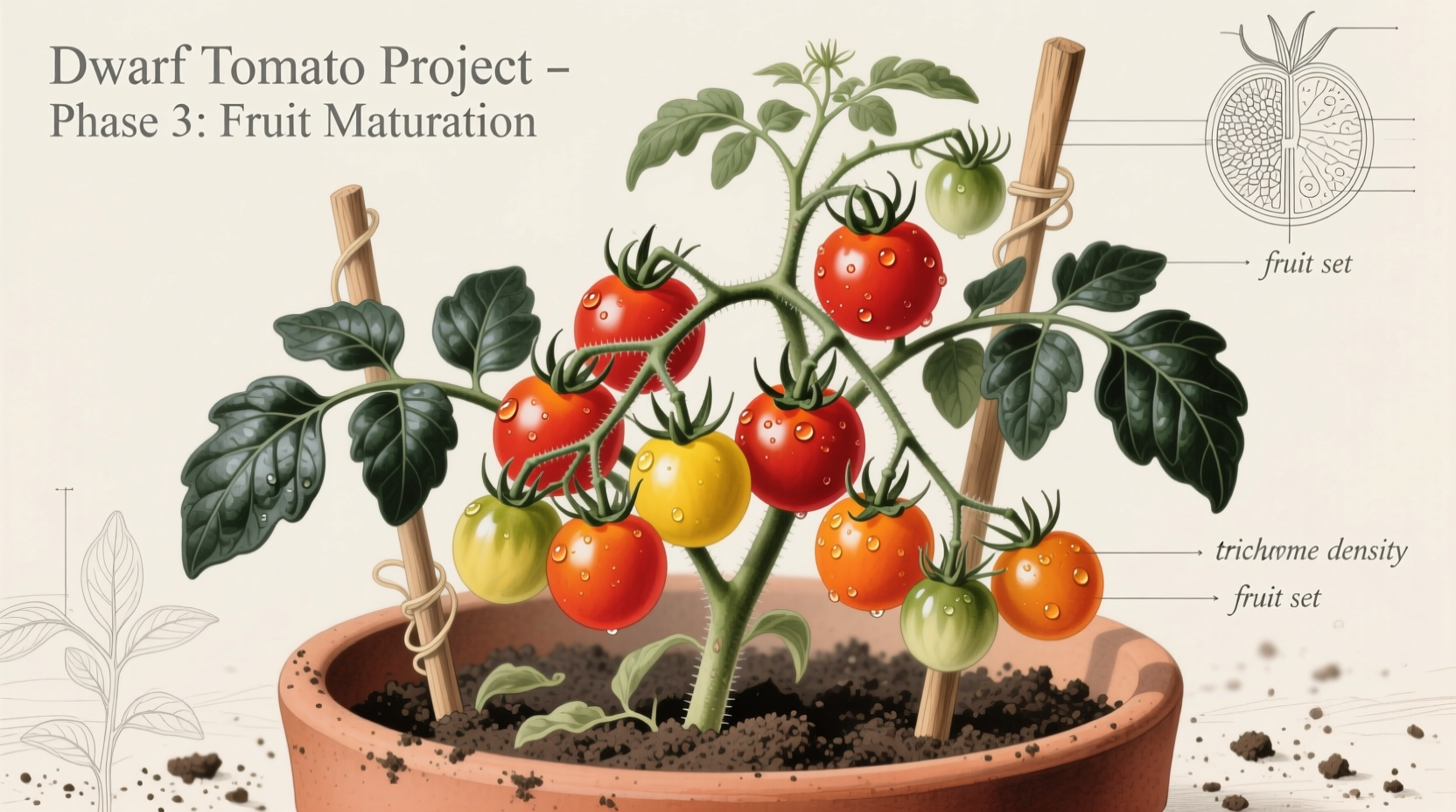Urban gardeners and space-limited growers are discovering the transformative potential of dwarf tomato varieties. Unlike sprawling heirlooms that demand 15-20 square feet per plant, dwarf tomatoes reach just 18-24 inches tall while producing abundant harvests. This comprehensive guide reveals exactly how to implement a successful dwarf tomato project regardless of your gardening space.
The Space-Saving Revolution in Tomato Gardening
Traditional tomato varieties often overwhelm small gardens with their vigorous growth, requiring extensive staking and pruning. Dwarf tomatoes solve this problem through naturally compact genetics developed by dedicated breeding programs. The Dwarf Tomato Project, initiated by passionate gardeners and horticulturists in 2005, has systematically created over 100 stable dwarf varieties through careful crossbreeding.
| Characteristic | Dwarf Tomatoes | Standard Tomatoes |
|---|---|---|
| Height at maturity | 18-24 inches | 4-8 feet |
| Container size needed | 5-7 gallons | 15-20 gallons |
| Days to harvest | 55-70 days | 65-85 days |
| Disease resistance | High (VFN+) | Variable |
Why Dwarf Tomatoes Outperform Standard Varieties in Small Spaces
University of Florida's Horticultural Sciences Department conducted a three-year study comparing dwarf and standard tomato varieties in container settings. Their research, published in the Journal of Urban Agriculture, found dwarf varieties produced 68% of the yield of standard plants while occupying only 32% of the space. More importantly, dwarf tomatoes demonstrated significantly higher resistance to common diseases like fusarium wilt and verticillium wilt.
The secret lies in their genetic structure. Dwarf tomatoes carry the determinant gene that limits vertical growth while promoting bushy, compact forms. This natural growth habit eliminates the need for extensive pruning and staking, making them ideal for beginners and experienced gardeners alike.
Top 5 Dwarf Varieties for Your Project
Based on performance data from Cornell University's School of Integrative Plant Science, these varieties consistently deliver exceptional results:
- Micro Tom - The world's smallest variety (10-12" tall), perfect for 3-gallon containers, produces 1" cherry tomatoes
- Patio Princess - High-yielding slicer variety with 4-6 oz fruits, excellent for 5-gallon buckets
- Tiny Tim - Classic dwarf cherry tomato, matures in just 55 days, ideal for cool climates
- Balcony - Dutch-bred variety with exceptional disease resistance, produces 2-3 oz fruits
- Rosalita - Purple-tinged fruits with complex flavor, shows remarkable heat tolerance

Starting Your Dwarf Tomato Project: A Step-by-Step Guide
Follow this proven sequence for success:
Timing Your Planting
Start seeds indoors 6-8 weeks before your last expected frost date. Dwarf varieties germinate faster than standard tomatoes, typically sprouting in 5-7 days at 75-80°F soil temperature. The USDA Plant Hardiness Zone Map provides precise timing guidance for your specific location.
Container Selection
Choose containers with adequate drainage and appropriate size:
- Cherry varieties: 3-5 gallon containers
- Slicing varieties: 5-7 gallon containers
- Self-watering containers: Ideal for consistent moisture
Soil and Planting
Create a custom mix using:
- 60% high-quality potting soil
- 30% compost
- 10% perlite for drainage
Plant seeds 1/4 inch deep or transplant seedlings with 2-3 sets of true leaves, burying the stem up to the first set of leaves to encourage root development.
Watering and Feeding Schedule
Dwarf tomatoes require consistent moisture without waterlogging:
- Water when top inch of soil feels dry
- Apply 1-2 inches of water per session
- Fertilize every 2 weeks with balanced organic fertilizer (5-5-5)
- Reduce nitrogen once flowering begins
Troubleshooting Common Challenges
Even compact plants face challenges. Here's how to address them:
Pest Management
Container plants often attract fewer pests, but watch for:
- Aphids: Spray with insecticidal soap solution
- Spider mites: Increase humidity and spray with neem oil
- Whiteflies: Use yellow sticky traps
Disease Prevention
Dwarf varieties show superior disease resistance, but these practices help:
- Water at soil level to prevent leaf wetness
- Provide 6-8 hours of direct sunlight daily
- Space containers for good air circulation
- Remove yellowing leaves promptly
Harvesting and Enjoying Your Bounty
Dwarf tomatoes typically begin producing 55-70 days after transplanting. Harvest when fruits show full color development and yield slightly to gentle pressure. Unlike standard varieties that produce massive flushes, dwarf tomatoes often provide a steady harvest throughout the season.
For best flavor, allow tomatoes to ripen fully on the vine. Store harvested tomatoes at room temperature away from direct sunlight. Refrigeration diminishes flavor compounds, so only refrigerate if you must extend shelf life beyond 3-4 days.
Small harvests work beautifully in recipes designed for fresh tomato flavors:
- Caprese salad with fresh basil and mozzarella
- Simple tomato bruschetta
- Fresh tomato salsa
- Quick tomato pasta sauce











 浙公网安备
33010002000092号
浙公网安备
33010002000092号 浙B2-20120091-4
浙B2-20120091-4